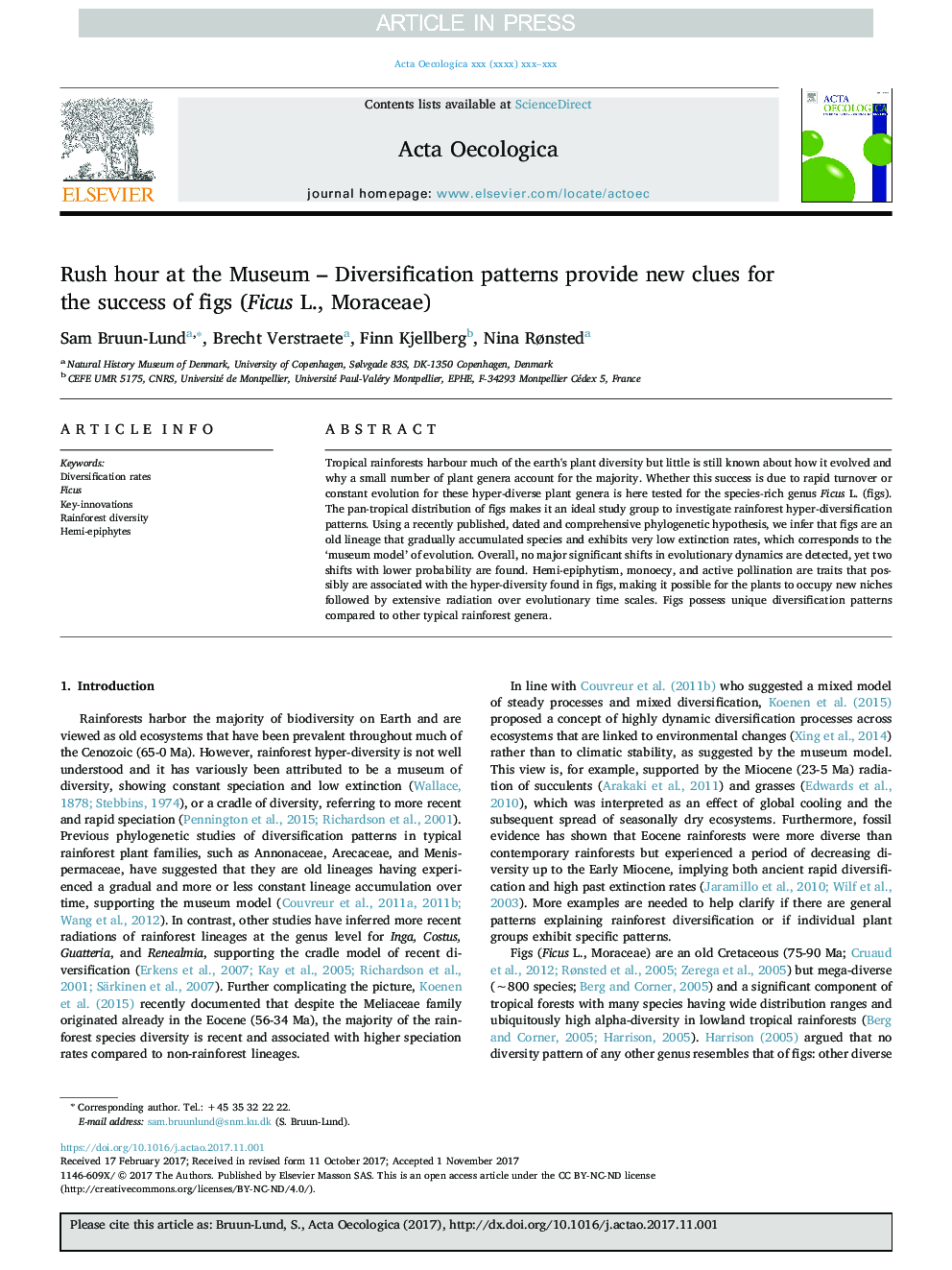| Article ID | Journal | Published Year | Pages | File Type |
|---|---|---|---|---|
| 8846471 | Acta Oecologica | 2018 | 8 Pages |
Abstract
Tropical rainforests harbour much of the earth's plant diversity but little is still known about how it evolved and why a small number of plant genera account for the majority. Whether this success is due to rapid turnover or constant evolution for these hyper-diverse plant genera is here tested for the species-rich genus Ficus L. (figs). The pan-tropical distribution of figs makes it an ideal study group to investigate rainforest hyper-diversification patterns. Using a recently published, dated and comprehensive phylogenetic hypothesis, we infer that figs are an old lineage that gradually accumulated species and exhibits very low extinction rates, which corresponds to the 'museum model' of evolution. Overall, no major significant shifts in evolutionary dynamics are detected, yet two shifts with lower probability are found. Hemi-epiphytism, monoecy, and active pollination are traits that possibly are associated with the hyper-diversity found in figs, making it possible for the plants to occupy new niches followed by extensive radiation over evolutionary time scales. Figs possess unique diversification patterns compared to other typical rainforest genera.
Keywords
Related Topics
Life Sciences
Agricultural and Biological Sciences
Ecology, Evolution, Behavior and Systematics
Authors
Sam Bruun-Lund, Brecht Verstraete, Finn Kjellberg, Nina Rønsted,
